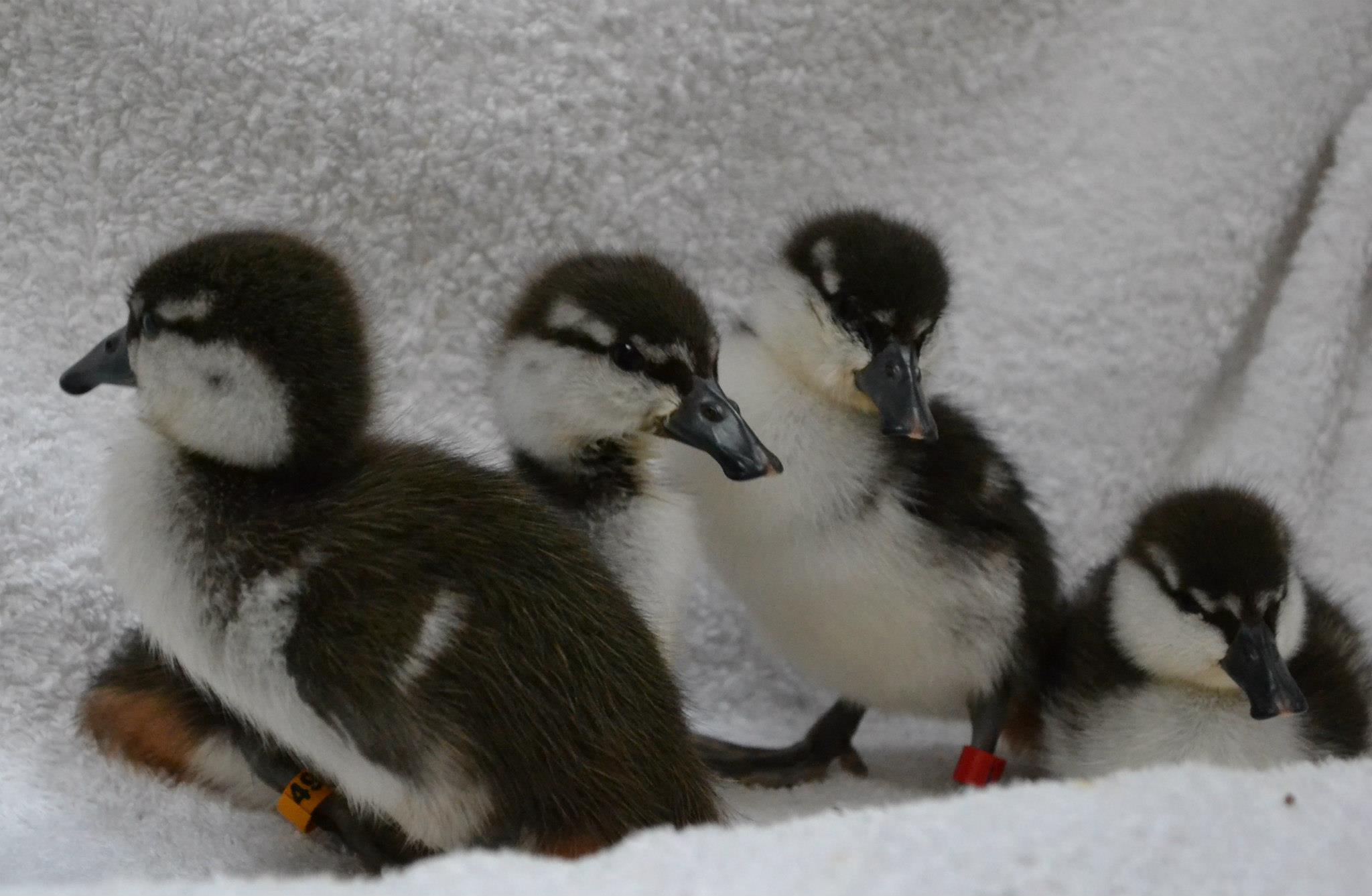Broody fantastic
Equipped with a pair of large pink over-sized feet and a fleshy bill designed to prise algae from rocks, Blue ducklings make a dash for independence earlier than most birds.
After they’re two days old, they’ll begin their lifelong task of looking for food on our frothy alpine rivers –stripping rocks of algae and catching insects. So as soon as I sat down in their enclosure in Auckland Zoo, all five month-old ducklings waddled up to me matter of factly, and got to work stripping any food scraps from my jeans.
During February & March ( if all goes well) all eleven hatchlings from the zoo will be given a health check at Peacock Springs in Christchurch and then they’ll be let loose in Taranaki’s Mount Egmont National Park .
In the past 12 years, 114 endangered Blue ducks (or whio) have been released into the eight ‘secure’ (read: predator controlled) sites from captive breeding programmes at the Auckland Zoo, Peacock Springs, Orana Wildlife Park and Staglands.
These endangered birds are one of a number of native animals that will be released into the wild from Auckland Zoo including kaka, pateke (brown teal), tuatara and giant weta over the next year or two. The equivalent of seven full-time keepers & expert breeders work behind at the scenes at the Zoo to help replenish these wild populations.
The kaka are delivered to Mt Bruce, Maugatautiri and Cape Kidnappers, the pateke are dispatched to locations all over NZ and the tuatara are deposited on offshore islands, such as Cuvier and Stanley islands. All these species have proven to breed successfully in captivity. Not so, for other native animals – such as our critically endangered Archey’s frog.
Twenty four of these coin-sized frogs were plucked from nearby forests by DOC and Canterbury University staff after the spread of the chythrid disease threatened their existence in the late 1990’s , and although these animals came to the zoo in 2005, they are still yet to breed.
The Curator of NZ Fauna, Ian Fraser is pleased with the steady progress in husbandry over recent years, and is hopeful that healthy froglets might be born in the next year or two. One problem that has hindered the programme was a man drought (5 males vs 19 females) that was confirmed after a urine test (a painstaking task for a 20mm animal!) was conducted earlier this year.
If the female was in sole charge of the eggs, this gender ratio would be beneficial however it’s the males that sit on the eggs and guards them. Unfortunately the abundance of females created a population of male parents suspected of having wandering eyes – and prone to abandoning their nests, however segregated chambers has fixed this dilemma.
One other conundrum was the discovery that the frogs were developing froggy osteoporosis, so the zoo has tinkered with their diet, and given these nocturnal frogs a little UV exposure, which hopefully will lead to better breeding success.
Breeding, Ian says, requires monk-like patience because often it’s just a matter of determining a matrix of factors that will nudge these animals closer to breeding success.
One such species that has also proven to be a headache to breed is our fist-sized giant weta, however conservationists and breeders alike let out a collective sigh of relief after Butterfly Creek’s pro-weta breeder – Paul Barrett recently cracked the art of rearing their young.
Last year over a dozen captive bred weta punga were released on Tiritiri Matangi and Motuora islands, and the programme was extended to Auckland Zoo after 12 weta were collected from predator-free Little Barrier island.
The weta have all been seen mating and the zoo is hopeful they will be able to emulate Butterfly Creek’s success with a release tentatively scheduled for 2014.
Although Auckland Zoo is one of the most diverse and largest breeding native breeding facilities in NZ, Ian reminds me that it’s the work of many organisations (such as other zoos, private wildlife parks and universities) that have shared their knowledge to make captive breeding successful.
Given our long-list of threatened and endangered species, there’s no doubt a growing demand for more breeding programmes to complement restoration projects, however vacant areas to do this work in the back-blocks of the zoo are rare, and new programmes need to be funded through the zoo.
However, that doesn’t stop Ian from dreaming, and if resources allow, he hopes the zoo will embark on new breed-for-release programmes for species such as kakariki and black mudfish, which will help restore wild populations around the Auckland region .

